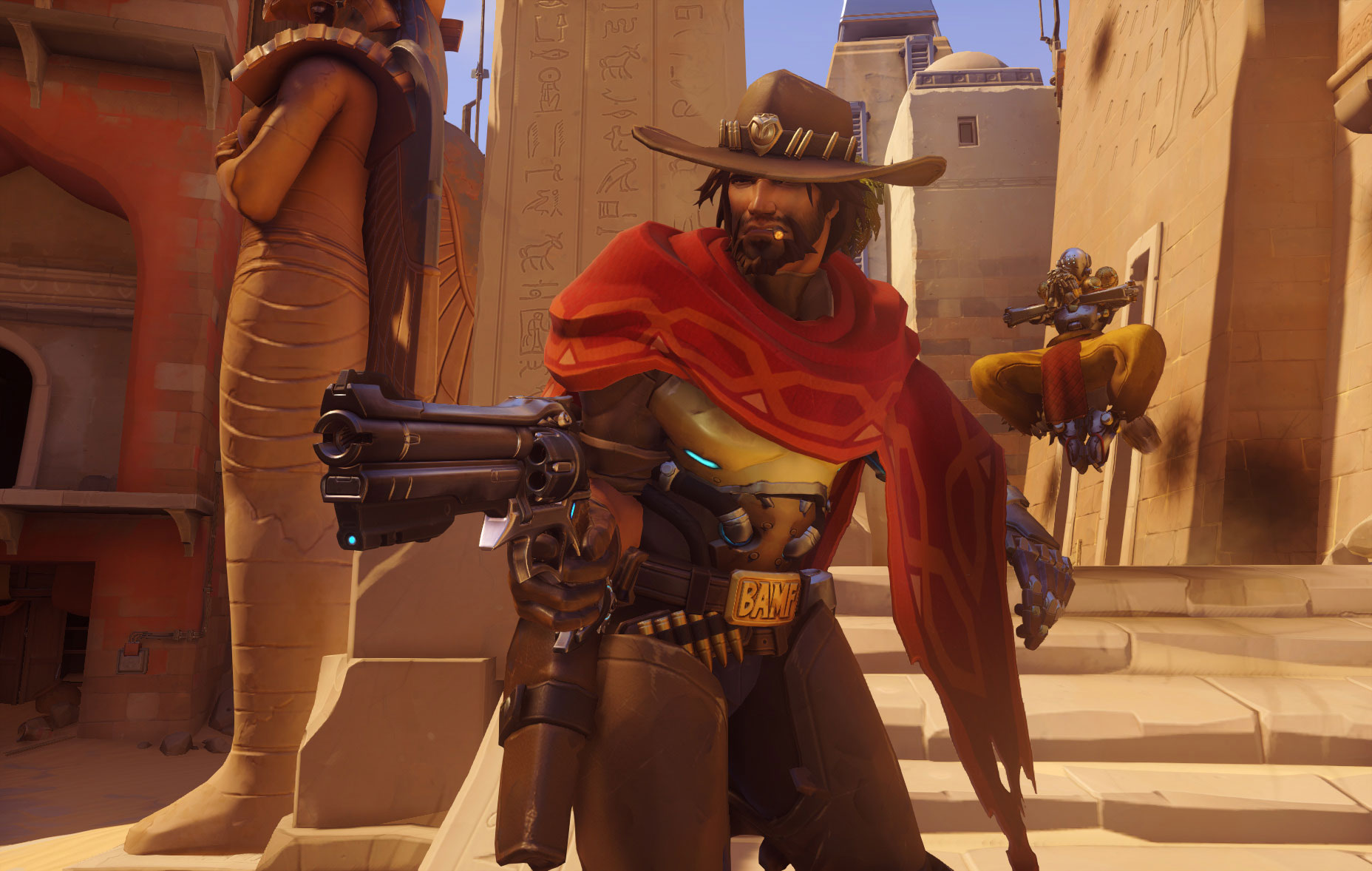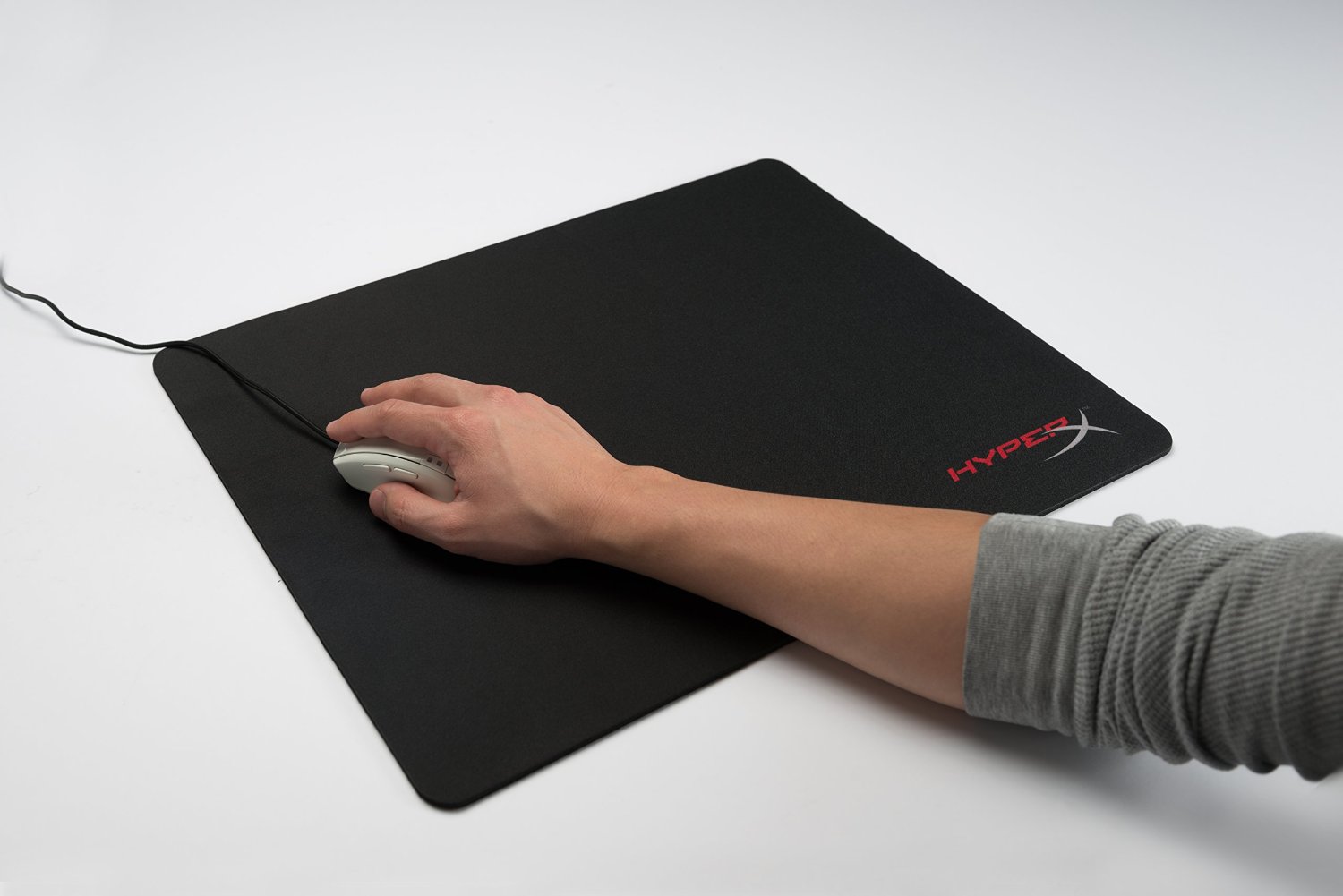Aim training: How to improve your FPS aim
Build good habits by learning how to practice and hold your mouse.

Want some aim training tips to help improve your win rate or K/D ratio? It's tempting to just keep banging your head against the wall in FPS games, hoping to improve through play, but sometimes the best way to get better can actually be to take a step back and practice the fundamentals. Even just a little aim training can go a long way.
You don't have to practice everyday or take it as seriously as the pros, but they still have plenty of insight to offer. Former professional Overwatch player Rémy 'Adetonian' Cabresin kindly spoke to us about improving FPS skills. Here's how to tweak our game settings, some helpful practice exercises to try, and the best gear for improving our aim training.
Aim training map: Aim Lab is versatile and free
If you're looking for a helpful and reliable aim training tool, give Aim Lab a try. It's free on Steam, and it's also in Early Access so it's getting better all the time. It opened Emma's eyes to better methods of aim training, and it recently introduced a Creator Studio where dedicated community members have crafted specific training tasks and scenarios for the most popular shooters.
You can use it to improve different aspects of your training, including tracking and reflexes. You'll also get a detailed summary of your results, highlighting your accuracy and reaction time to show your progress. It offers personal feedback based on your performance, and it even has leaderboards to encourage you to keep at it.
Get your gear right
Now let's take a look at your setup. When it comes to aiming accuracy, the two most important pieces of hardware are your mouse and mousepad. Luckily, mouse sensor technology has advanced, so you can get an accurate rodent without breaking the bank.
When hunting for the best gaming mouse, a few things to consider include DPI capabilities, weight, and button layout. We, and the pro players we've spoken to, generally recommend simpler, lighter mice. For shooters, you likely only need one or two thumb buttons for core abilities, and the lighter variants are much easier to quickly whip around the mouse pad. You also want the lowest possible response time, as you won't be able to land headshots if your mouse is slower than your reflexes.
Next on the list is a comfortable mat, and we have a few recommendations for the best mouse pads, depending on your needs. Adetonian recommends getting the largest mousepad that can fit on your desk, as you don't want to have to pick up your mouse in the middle of a firefight. This is mostly a concern for players who use very low DPI settings, which require much larger hand movements to move the cursor.
The biggest gaming news, reviews and hardware deals
Keep up to date with the most important stories and the best deals, as picked by the PC Gamer team.

Let's get physical
Once your hardware is in a good place, you want to make sure that your body is too. Some people claim that the way you hold your mouse can affect your performance (claw, palm, and fingertip grip are the three most commonly discussed), but Adetonian advises that it's best to do whatever feels most comfortable. There are a lot of questionable infographics out there, but this largely comes down to the size of your hand and how it fits the mouse you use.
"What's more important is the general ergonomics of your setup," he said. "If you slouch because you're tired, it'll impact your playing. You also want to make sure there's plenty of room for your wrists."
Sense and sensitivity
Mouse sensitivity is the single most important setting when it comes to FPS aiming. But there's no silver bullet of magical settings that will automatically make you a better shot. It's all about finding the settings that feel most natural, while giving you full control.
We've debunked several gaming mouse myths in the past, and higher DPI (Dots Per Inch) certainly isn't always better. Some mice will actually perform worse at their highest DPI settings, as tiny physical movements can translate into more noticeable cursor movements. There's also the question of what to set your mouse's driver software DPI setting to, versus the sensitivity setting you use in different games.
Generally, it's best to pick a base DPI that you're comfortable with in Windows, e.g. 800 DPI, then test it out in a game like CS:GO. Once you've got a feel for your DPI and in-game sensitivity in one game, you can work out your eDPI (Effective Dots Per Inch) which makes it easier to adjust your settings to get the same 'feel' in other games. Emma explains why this is important, and how you can work it out for yourself in her article on why low DPI is best for shooters. You also want to make sure that mouse acceleration is turned off, as that'll make precise aiming movements much harder.
A low sensitivity setting gives you more control to perform precise movements, but also requires you to control your mouse by moving your elbow, rather than at the wrist. Adetonian says it's good to start in the 400-800 DPI range, and then adjust sensitivity as needed. (On a large high-res monitor, you may find a DPI setting in the 1000s more suitable to Windows.) Here's what the difference between a low and high sensitivity can look like.
Moving from one end of the mousepad to the other, with 400 DPI:
The same movement, this time with 1600 DPI:
If you find that you're often overshooting your targets, try turning your sensitivity down in-game. Similarly, if you find that you're undershooting, or that you're having to make movements that feel a little too dramatic in order to spin around, then your sensitivity might be a bit low.
Avoid being too aggressive with your sensitivity adjustments as this will have a negative effect on your aim training. Adetonian says not to immediately change your settings when you have a single bad game—doing so will mess with your muscle memory. Instead, only look to tweak your sensitivity if you have a consistent stretch of poor performance. Give all adjustments time to sink in before you write them off.
Techniques and game sense
There are two primary types of aiming: tracking and flick shots. Tracking refers to keeping your crosshair stuck on your target at all times, and following them as they move—useful for DPS characters with automatic weapons, like Overwatch's Soldier: 76 and Tracer.
Flickshots involve flicking your crosshairs at your target then returning to a neutral position—used for single-shot weapons, such as snipers or Overwatch's McCree.
Regardless of which type of character you're using, Adetonian recommends keeping your crosshairs resting wherever you expect to encounter an enemy. Anticipating enemy movements is key, and you'll improve this as you continue to play more regularly. If you start every fight by having to react, you're more likely to miss your target.
"When you're not in a fight, you want to hold your crosshair at the corner where you expect the opponent to come," Adetonian said. "When you go around a corner, snap your crosshair to the next corner in your path and keep it tracked there as you move up."
Practice makes perfect
Once you've found a sensitivity that feels natural, it's time to work on your muscle memory. Flickshots heavily rely on muscle memory, but it's important in all parts of FPS play, whether you're navigating the map, or spinning to hit an enemy behind you.
"There are browser games you can play that people think will help improve their aim, but all they do is improve your reflexes—not train your aim," Adetonian said. This is because your in-game sensitivity doesn't translate one-to-one to your unaltered cursor movements in Windows, and thus the muscle memory for moving a certain distance isn't exactly the same.
A better plan is to practice aim training in your game of choice. For tracking, aim your crosshair at a single point, then start moving. While strafing around—making the sorts of movements you would make during a firefight—keep your crosshair on that single spot. This trains your muscle memory, Adetonian says.
When you can easily keep your cursor motionless while strafing around, it's time to start practicing against a moving target. You need to be able to hit your targets while staying mobile, so continue strafing while keeping your crosshairs steadily locked on an opponent. Don't wait for them to enter your crosshairs. Your movements should be erratic and unpredictable—and your opponents' often will be too.
This is where custom games with bots come in handy. Setting the AI bots to the hardest difficulty will make them move at least somewhat realistically, but be sure to turn the damage modifier down as well. After all, you don't want to worry about getting mauled by AI bots when all you want to do is practice tracking moving targets. Here's my attempt at tracking the elusive Lúcio:
Overwatch custom games are great for flickshot training as well. Set up a game with six Ana bots on the other team and change the settings to headshots only. The hero Ana can't headshot, so she'll just strafe around the map, letting you practice your aim without risking death.
If your FPS of choice is CS:GO you can be more granular with your aim training. You can practice anything from reflex training to peeking and prefiring. It's also a good idea to learn the unique spray patterns for each weapon. If you're looking to claw your way out of Nova, check out Yesber's Steam Workshop maps. They've created a selection of training tools for each CS:GO map to help you get started.
With the Overwatch Workshop custom game builder, there are new aim-training games you can play like this one from PMAJellies.
Final thoughts
Simply playing more first-person shooters will help you get better, but other resources include self-improvement subreddits such as r/OverwatchUniversity and r/LearnCSGO. Follow the above tips first, go on the hunt for some more advice suited to your favorite shooter, and you'll be headshotting your way to victory before you can say "it's high noon".
As the former head of PC Gamer's hardware coverage, Bo was in charge of helping readers better understand and use PC hardware. He also headed up the buying guides, picking the best peripherals and components to spend your hard-earned money on. He can usually be found playing Overwatch, Apex Legends, or more likely, with his cats. He is now IGN's resident tech editor and PC hardware expert.


